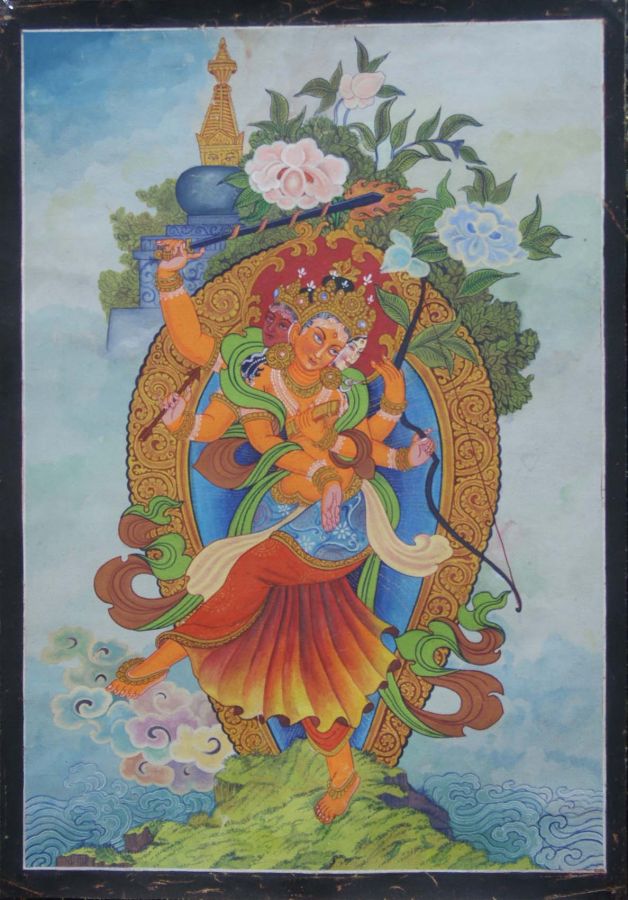
Code
HCS11155
Weight
100 gm / 0.22 lbs
Size
Height
45cm (18") Width
31cm (12") Material
Cotton Canvas
Availability
Sold
Date Added
2014-11-28 18:45:55
Note : We used to sell this product 11 years ago so it may no longer be in our stock.
It is possible that we still have it with our suppliers but the price could be different from before.
Feel free to order. We will verify availability and inform you promptly.
It is possible that we still have it with our suppliers but the price could be different from before.
Feel free to order. We will verify availability and inform you promptly.

Safe Payment
We accept Paypal, Money Transfer, Bank Transfer
Confidence
Protection covers your purchase and personal data.
Worldwide Delivery
We ship Worldwide, except Russia.Shipping cost US$25.2 for upto 0.5 kgs

Hotline
Talk to help line for your question on 9841267335These are one of the old painting of newari thangkas. Not so expectional as other in the list but saying so these painting are not any more available in the nepali market.
These went out of the market due to few fortunate and unfortunate events that took place in the artists of Newari thanga.
1. the good Newari artist were catapolted to such a hight that they became unreachable to normal market. and they stop painting simplier kinds of thangka.
2. And to those who wore not. they were runned down by the cheaper Tamga artist.
These went out of the market due to few fortunate and unfortunate events that took place in the artists of Newari thanga.
1. the good Newari artist were catapolted to such a hight that they became unreachable to normal market. and they stop painting simplier kinds of thangka.
2. And to those who wore not. they were runned down by the cheaper Tamga artist.
About sold
this item is sold
this item is sold
Newari Paubha
This Dancing Manjushri Newari Thangka, [sold] is a newari thangka or Paubaha, Paubha, also known as "paubhas," is a traditional religious painting created by the Newar people of Nepal. These exquisite artworks depict various subjects, including deities, mandalas, and monuments, and serve as aids for meditation and spiritual practices. Paubhas are similar to Tibetan Thangka paintings and are highly regarded for their religious and cultural significance.
While most paubhas portray Buddhist subjects, there are also a few that incorporate Hindu themes. The creation of these paintings is seen as a means of earning religious merit for both the artist and the patron. Newar Buddhists often commission skilled artists, primarily from the Chitrakar caste (known as Pun in Nepal Bhasa), to paint paubhas that are displayed during festivals and special occasions. Read More . . .
This Dancing Manjushri Newari Thangka, [sold] is a newari thangka or Paubaha, Paubha, also known as "paubhas," is a traditional religious painting created by the Newar people of Nepal. These exquisite artworks depict various subjects, including deities, mandalas, and monuments, and serve as aids for meditation and spiritual practices. Paubhas are similar to Tibetan Thangka paintings and are highly regarded for their religious and cultural significance.
While most paubhas portray Buddhist subjects, there are also a few that incorporate Hindu themes. The creation of these paintings is seen as a means of earning religious merit for both the artist and the patron. Newar Buddhists often commission skilled artists, primarily from the Chitrakar caste (known as Pun in Nepal Bhasa), to paint paubhas that are displayed during festivals and special occasions. Read More . . .
Introduction to Thangka
A thangka, also known as tangka, thanka, or tanka, is a vibrant and intricate Tibetan Buddhist painting that serves as a visual representation of spiritual teachings. Crafted with meticulous detail on cotton or silk appliqué, thangkas depict a wide range of subjects including Buddhist deities, sacred scenes, mandalas, and narrative stories. These sacred artworks are traditionally kept unframed and rolled up for storage, resembling ancient scrolls. To protect their delicate nature, thangkas are mounted on textile backings and often adorned with a silk cover on the front. Proper preservation in dry environments is crucial to maintain the integrity and longevity of the silk. Read More . . .
A thangka, also known as tangka, thanka, or tanka, is a vibrant and intricate Tibetan Buddhist painting that serves as a visual representation of spiritual teachings. Crafted with meticulous detail on cotton or silk appliqué, thangkas depict a wide range of subjects including Buddhist deities, sacred scenes, mandalas, and narrative stories. These sacred artworks are traditionally kept unframed and rolled up for storage, resembling ancient scrolls. To protect their delicate nature, thangkas are mounted on textile backings and often adorned with a silk cover on the front. Proper preservation in dry environments is crucial to maintain the integrity and longevity of the silk. Read More . . .
Brief Introduction :
Manjushree is a Sanskrit word meaning 'gentle glory'. In Sanskrit, "shree" means 'glorious' or 'honorable'. His name signifies one who embodies enlightened wisdom. He confers mastery of the Dharma, wisdom, and eloquence and teaches the path of a bodhisattva in the Mahayana tradition.
Commentary :Manjushree is the Bodhisattva who holds the flaming sword [Skt. Khadga] of enlightenment, by his left hand in a warning( Tarjani) hand gesture ( Mudra) in his left hand representing his realization of wisdom to cut through ignorance & wrong view. His right hand depicted in teaching (Jnana Mudra) holds the stem of a Blue Lotus (Utpala) flower upon which rests the Book (Pustaka) of Perfection of Transcendental Wisdom. The blue lotus is a symbol of the victory of the spirit over the senses and signifies the wisdom of knowledge. This represents the lotus that he obtained from the middle of the lake in the Kathmandu Valley out of which grew a lotus bearing a Blue Flame which represents wisdom. Manjushree sits upon a moon disc upon a lotus with an elongated stem arising from a lake. He wears a gold diadem fitted with precious jewels. He wears a silk scarf fastened at the waist and over this, a softly glowing green scarf decorated with golden motifs. His head is silhouetted against a nimbus. The lotus he is sitting on has an elongated stem and arises from a lake representing his recovery of the blue flame of transcendent wisdom and the teaching he originated. The white sash is the attire of the Vajrayana school of Buddhism.
According to legend, Manjushree founded the Nepalese civilization. In ancient times, way before Buddha Shakyamuni the Kathmandu Valley was a vast lake. The Buddha Vipashyin came to Nepal to meditate on the hill above the lake. Wishing to give the rough mountain people an object of worship, Vipashyin threw a lotus seed into the lake. When this lotus bloomed, a blue flame of wisdom light shone from the center of its thousand petals. This light was called the Swayambhunath Dharmadhatu, the Self-Sprung Infinite Field of Light, and the flame of the enlightened mind of the primal Buddha, Vajradhara burned at its center. The light of Vajradhara also emanated in the colors of the rainbow and in each of the five colors appeared one of the Five Buddhas - Vairochana, Akshobhya, Ratnasambhava, Amitabha, and Amoghasiddhi. Then Manjushri went to Nagarkot Peak on the edge of the lake, and after having pondered in Samadhi how best the lake may be drained, with his keen-edged sword of wisdom he cut three Gorges. After the lake had been drained and the Valley bottom made suitable for cultivation Manjushree founded the city of Patan which was originally called Manjupattan. He taught the people many things. Manjushree manifests himself in the form of Yamantaka, known also as Vajrabhairava in order to overcome the lord of Death, Yama.
The Book (Pustaka) represents Transcendent Wisdom which came to be embodied by the Dyani {Pancha} Buddha Families. The book symbolically contains Buddhist teaching that had been lost to mankind & which was revealed to Manjushree. The book is commonly mistaken for the Prajna Paramita which was written by many hands between 100 & 200 CE realizing the Boddhisattva Principle. The book of Manjushree alludes to Wisdom and the emanation of the Five Transcendent Buddha Families. These are Vairochana, Akshobhya, Ratnasambhava, Amitabha & Amoghasiddhi. Wisdom Energy is a power that can extinguish the Five Negative afflictions. Each family heads wisdom and energy to overcome these Five hindrances to enlightenment which are greed, hatred, delusion, jealousy & pride.
According to legend, Manjushree founded the Nepalese civilization. In ancient times, way before Buddha Shakyamuni the Kathmandu Valley was a vast lake. The Buddha Vipashyin came to Nepal to meditate on the hill above the lake. Wishing to give the rough mountain people an object of worship, Vipashyin threw a lotus seed into the lake. When this lotus bloomed, a blue flame of wisdom light shone from the center of its thousand petals. This light was called the Swayambhunath Dharmadhatu, the Self-Sprung Infinite Field of Light, and the flame of the enlightened mind of the primal Buddha, Vajradhara burned at its center. The light of Vajradhara also emanated in the colors of the rainbow and in each of the five colors appeared one of the Five Buddhas - Vairochana, Akshobhya, Ratnasambhava, Amitabha, and Amoghasiddhi. Then Manjushri went to Nagarkot Peak on the edge of the lake, and after having pondered in Samadhi how best the lake may be drained, with his keen-edged sword of wisdom he cut three Gorges. After the lake had been drained and the Valley bottom made suitable for cultivation Manjushree founded the city of Patan which was originally called Manjupattan. He taught the people many things. Manjushree manifests himself in the form of Yamantaka, known also as Vajrabhairava in order to overcome the lord of Death, Yama.
The Book (Pustaka) represents Transcendent Wisdom which came to be embodied by the Dyani {Pancha} Buddha Families. The book symbolically contains Buddhist teaching that had been lost to mankind & which was revealed to Manjushree. The book is commonly mistaken for the Prajna Paramita which was written by many hands between 100 & 200 CE realizing the Boddhisattva Principle. The book of Manjushree alludes to Wisdom and the emanation of the Five Transcendent Buddha Families. These are Vairochana, Akshobhya, Ratnasambhava, Amitabha & Amoghasiddhi. Wisdom Energy is a power that can extinguish the Five Negative afflictions. Each family heads wisdom and energy to overcome these Five hindrances to enlightenment which are greed, hatred, delusion, jealousy & pride.
Mantra of Manjushree
Om A Ra Pa Ca Na Dhih


![Dancing Manjushri Newari Thangka, [sold]](https://handicraftseller.com/uploads/pics/product/thumb/2014/11/11155.jpg)









 of 8 Arms Ganesh In
of 8 Arms Ganesh In  of 8 Arms Ganesh In
of 8 Arms Ganesh In 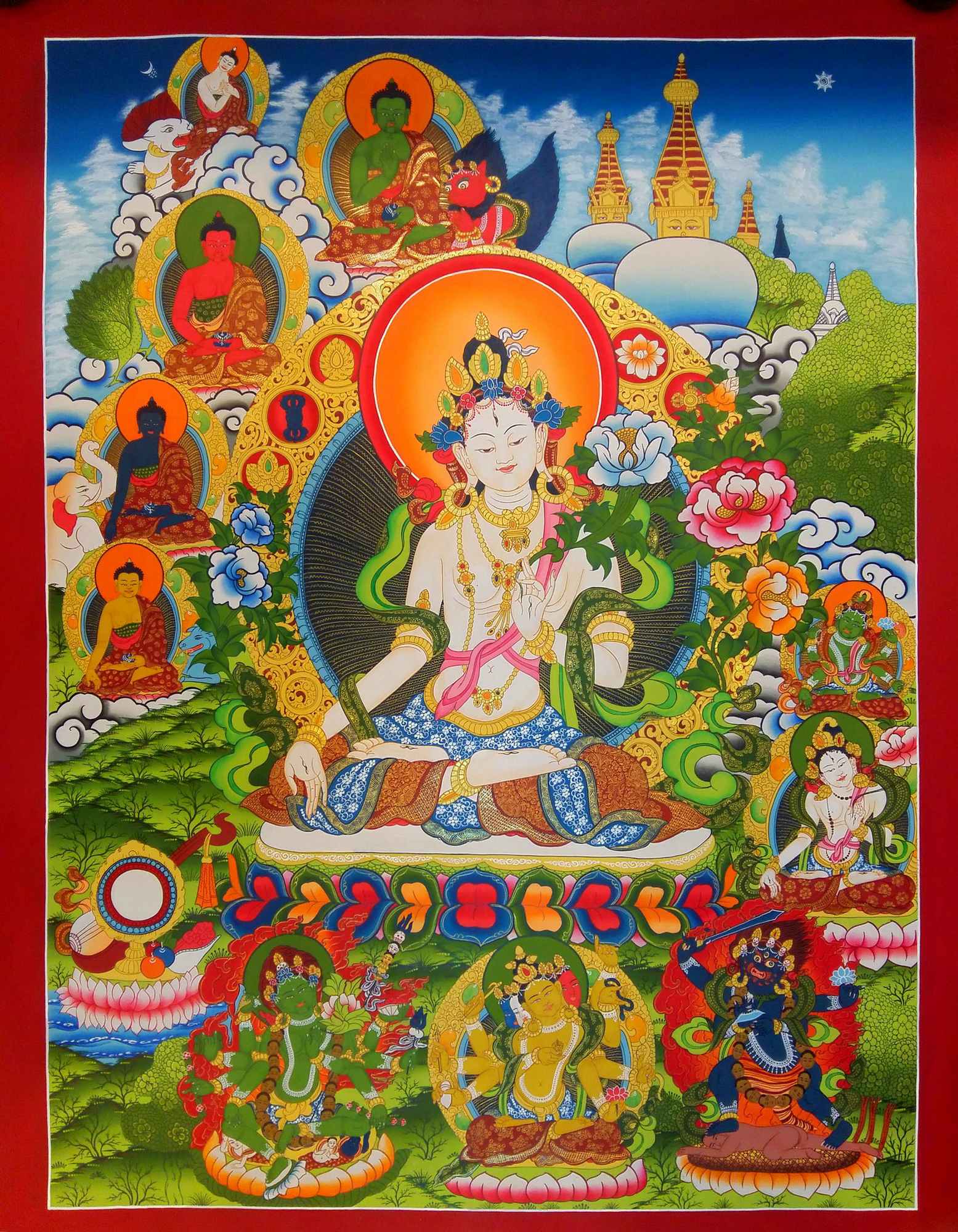 Best Quality,
Best Quality, 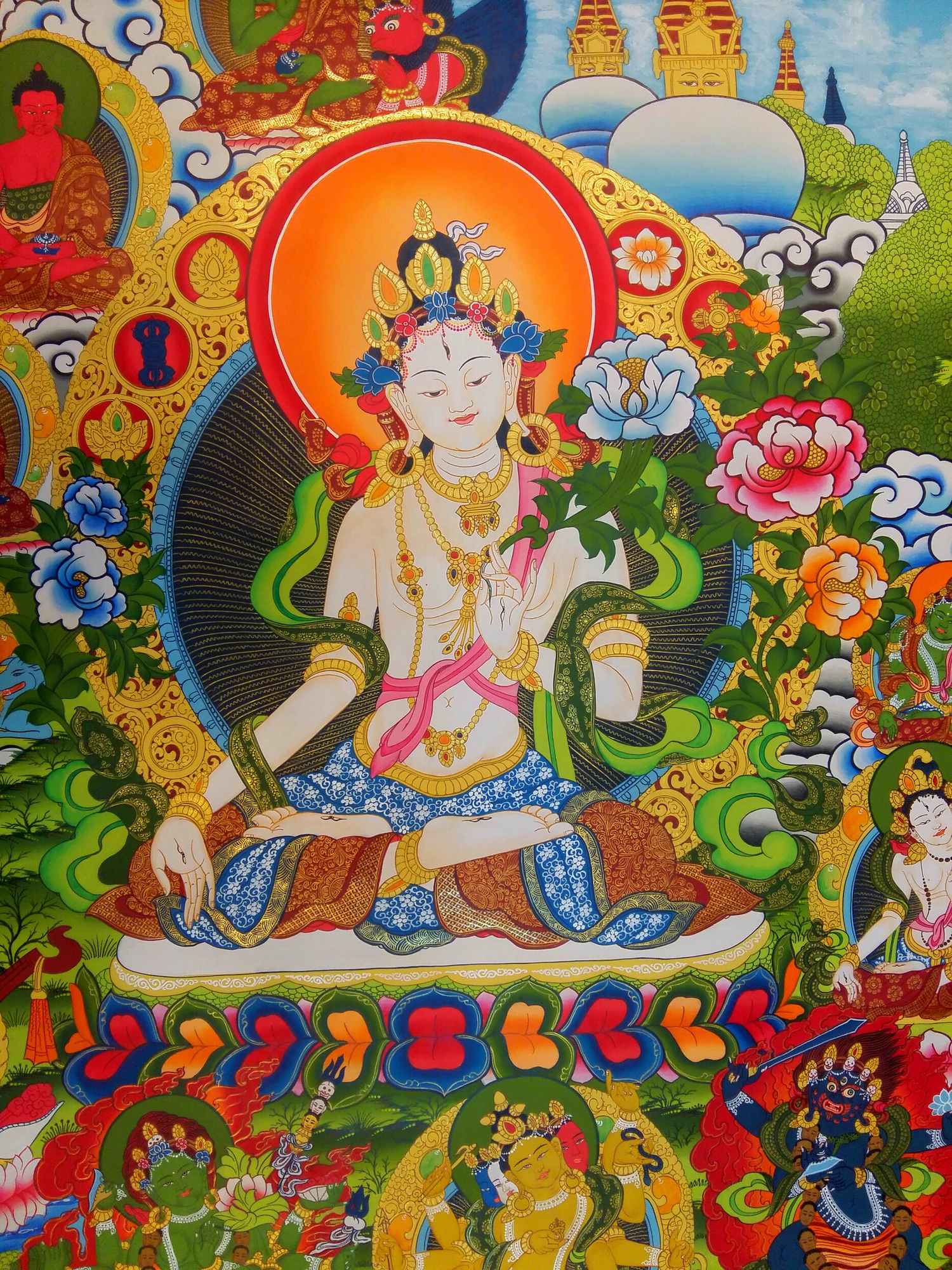 Best Quality,
Best Quality,  Newari Buddhist Thangka
Newari Buddhist Thangka  Newari Buddhist Thangka
Newari Buddhist Thangka  Master Quality, Newari Buddhist Thangka
Master Quality, Newari Buddhist Thangka 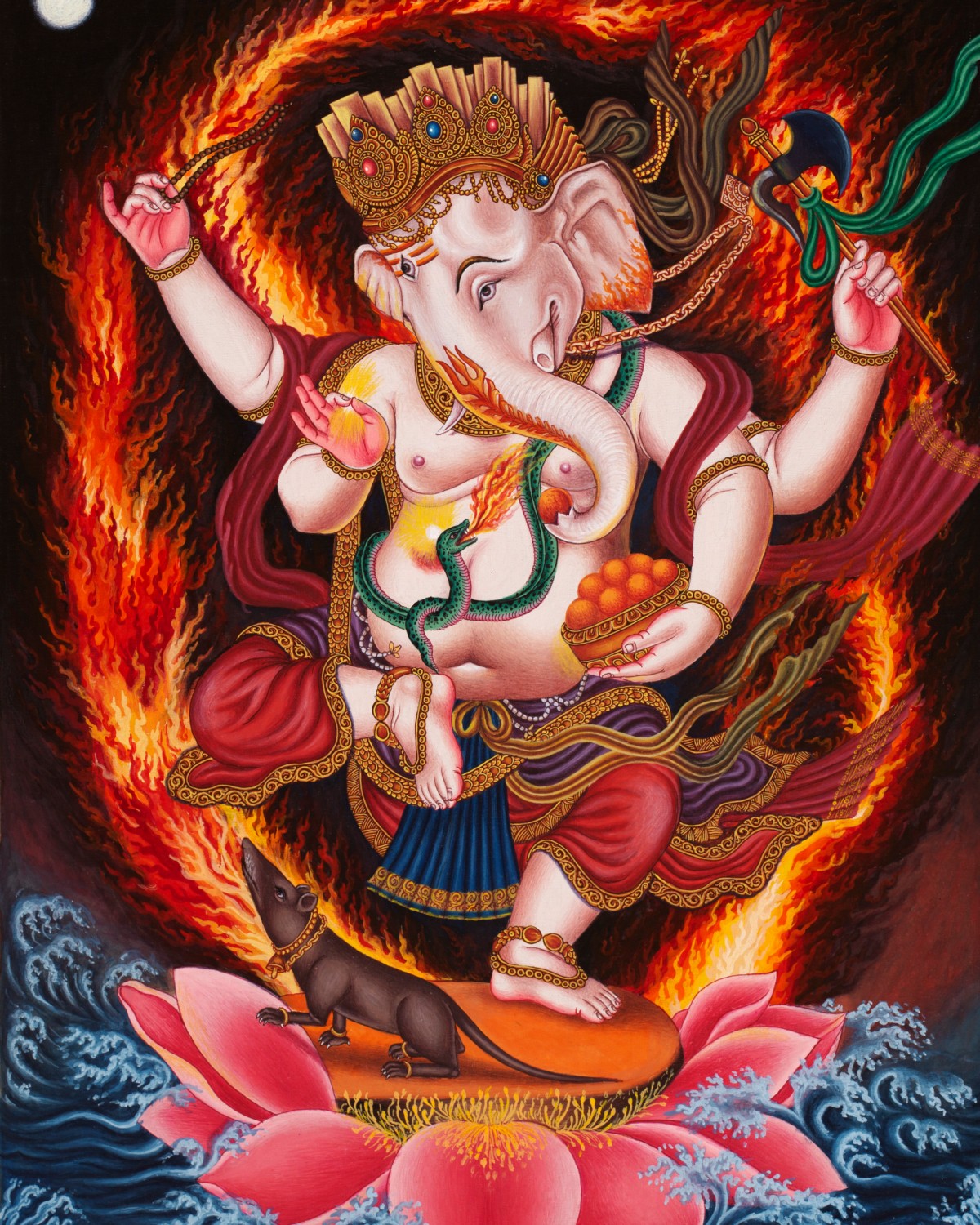 Master Quality, Newari Buddhist Thangka
Master Quality, Newari Buddhist Thangka 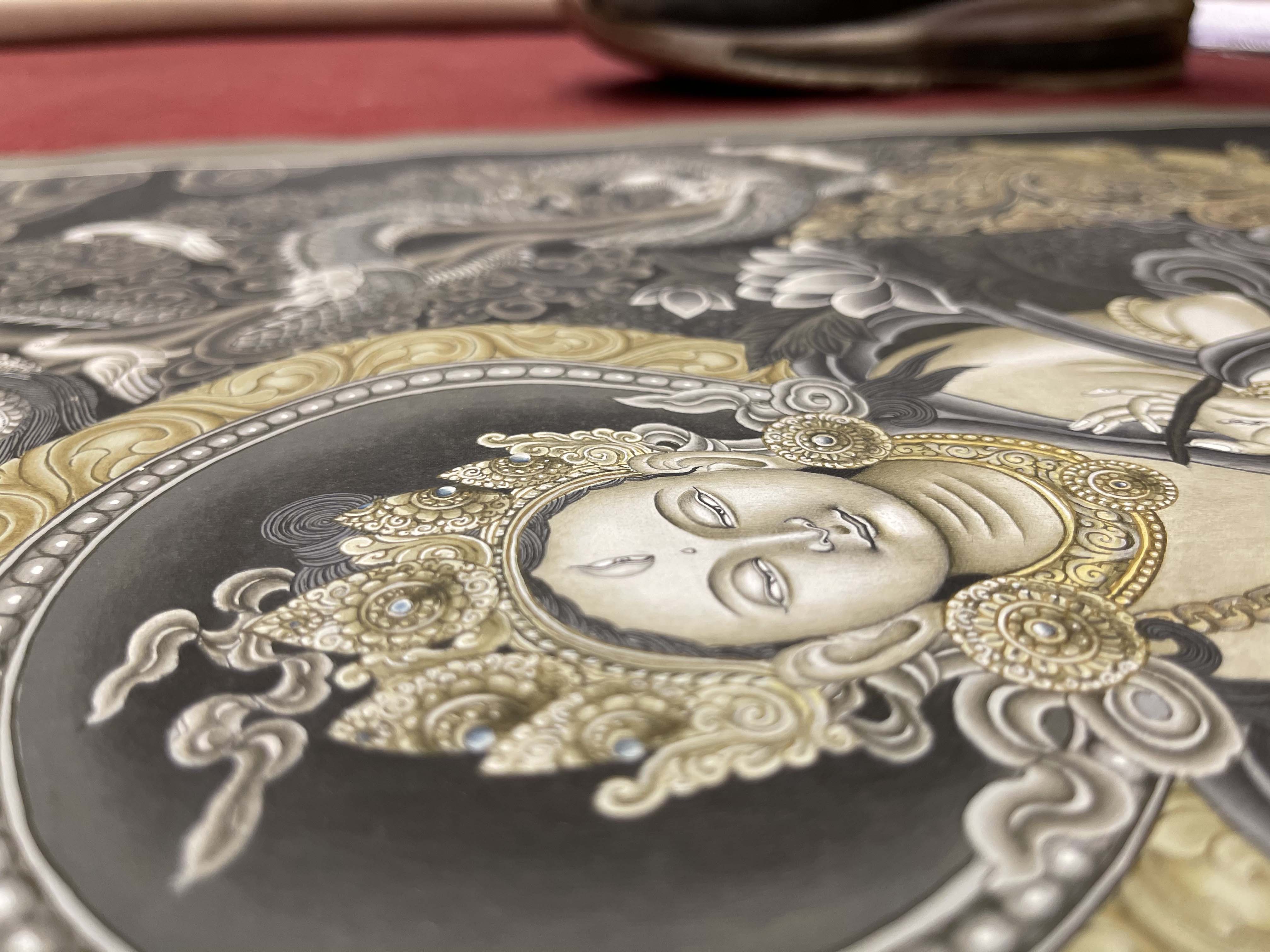 of White Tara, Lamas Art,
of White Tara, Lamas Art, 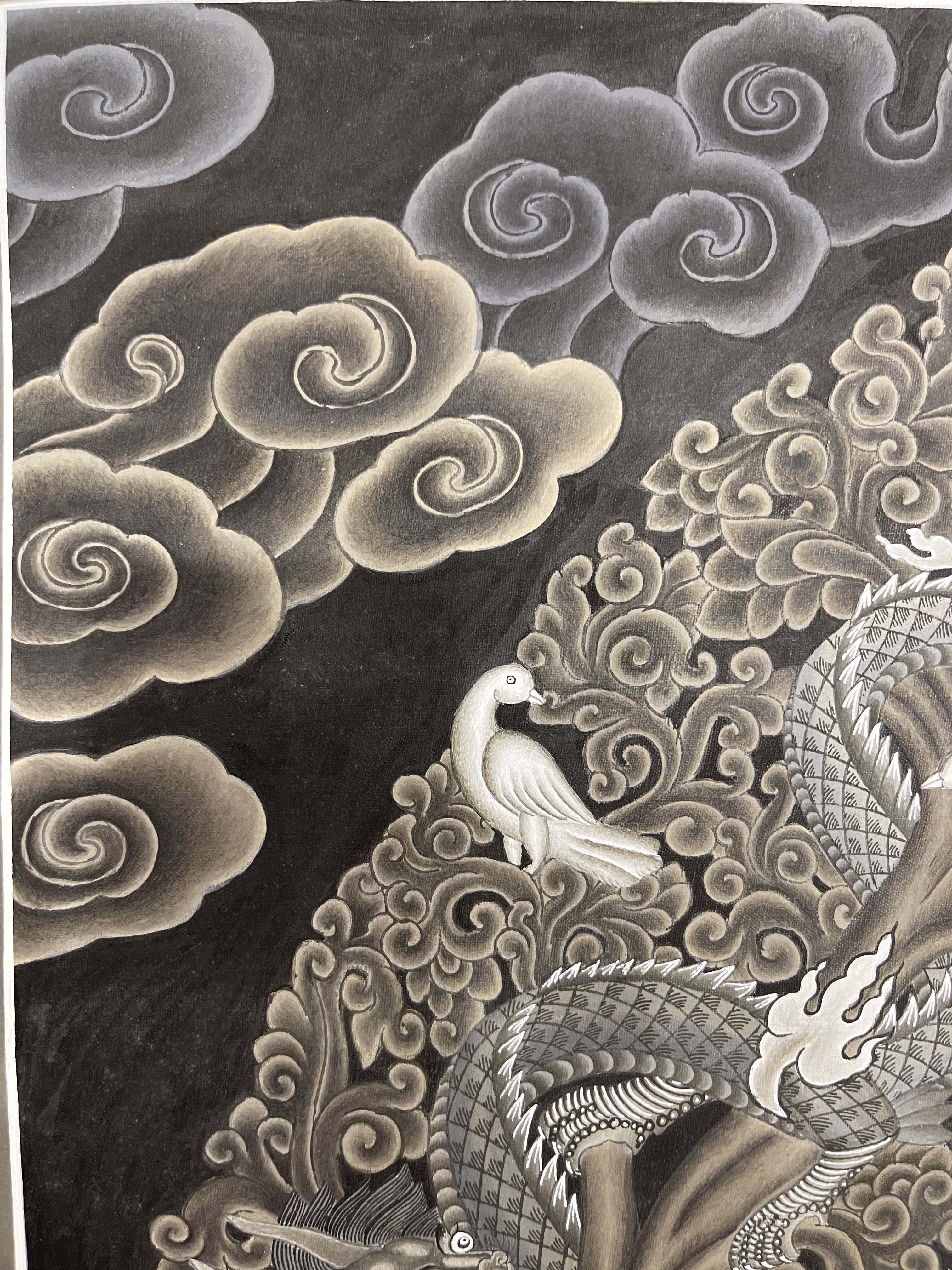 of White Tara, Lamas Art,
of White Tara, Lamas Art,  of Dancing Ganesh In
of Dancing Ganesh In 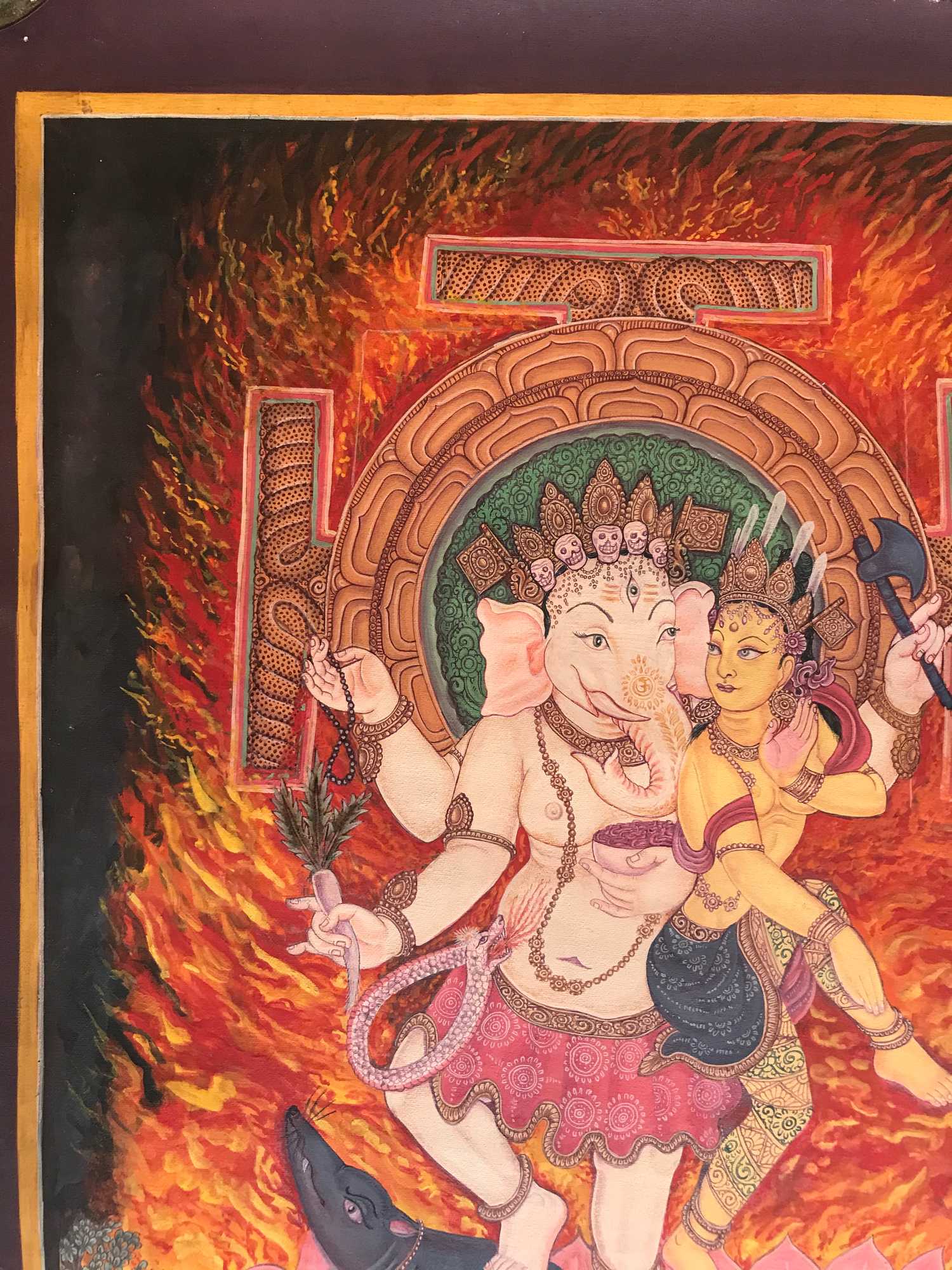 of Dancing Ganesh In
of Dancing Ganesh In  Old Post,
Old Post, 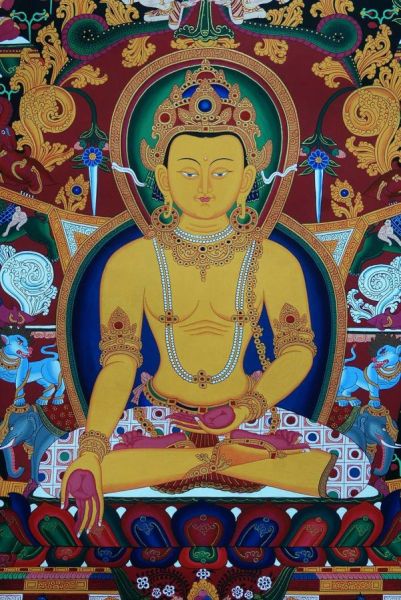 Old Post,
Old Post,  Master Quality, Newari Buddhist Thangka
Master Quality, Newari Buddhist Thangka  Master Quality, Newari Buddhist Thangka
Master Quality, Newari Buddhist Thangka  of In
of In 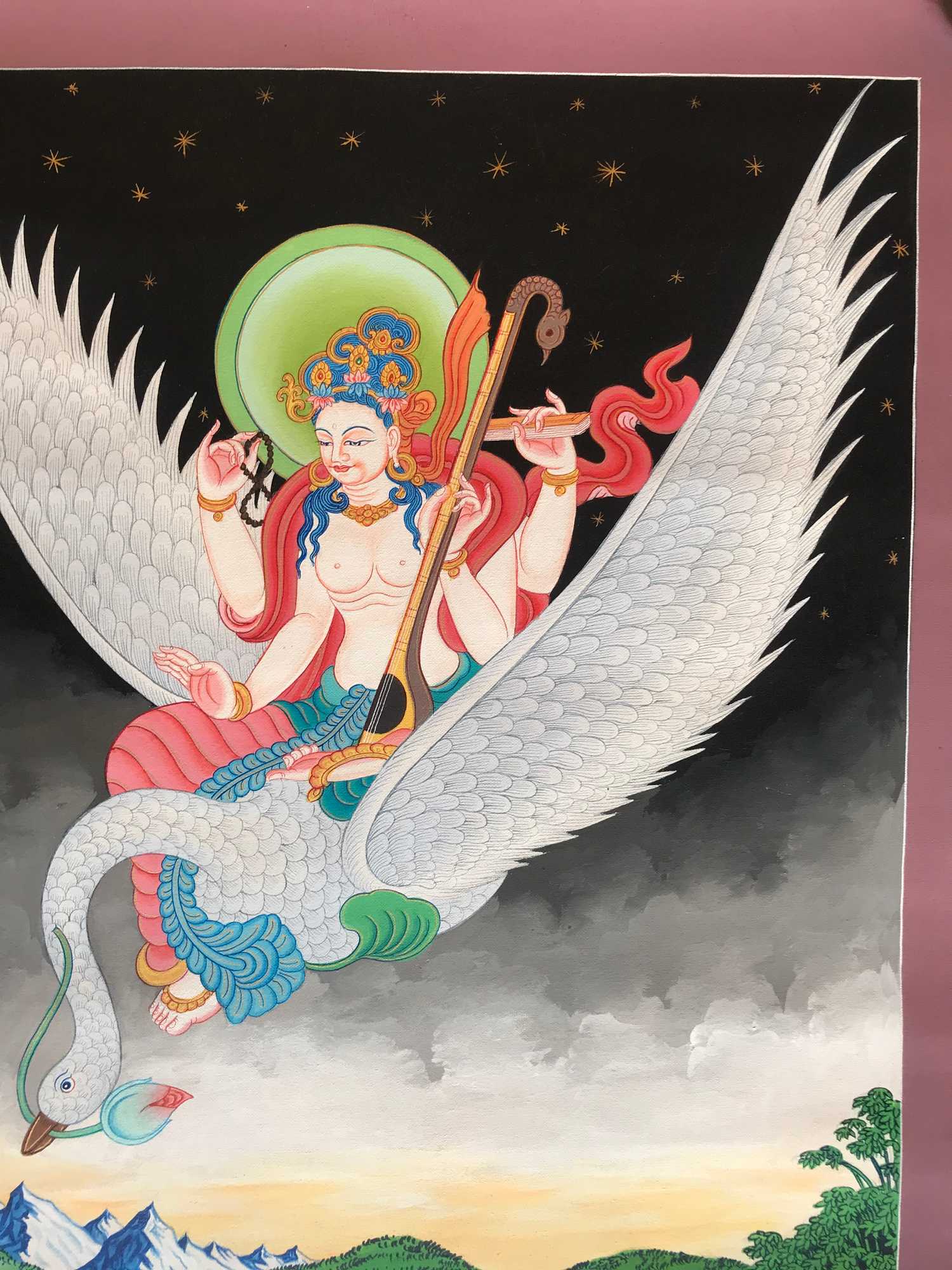 of In
of In  Old Post,
Old Post, 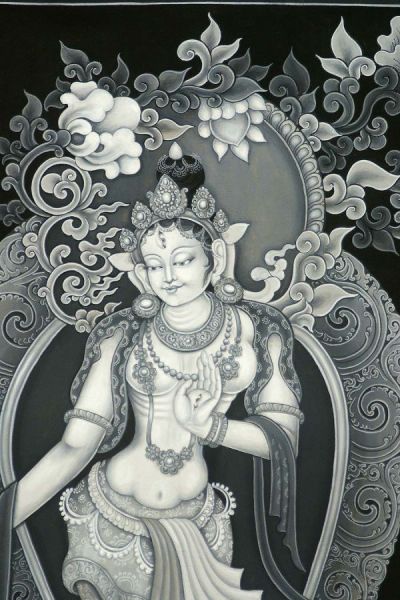 Old Post,
Old Post,